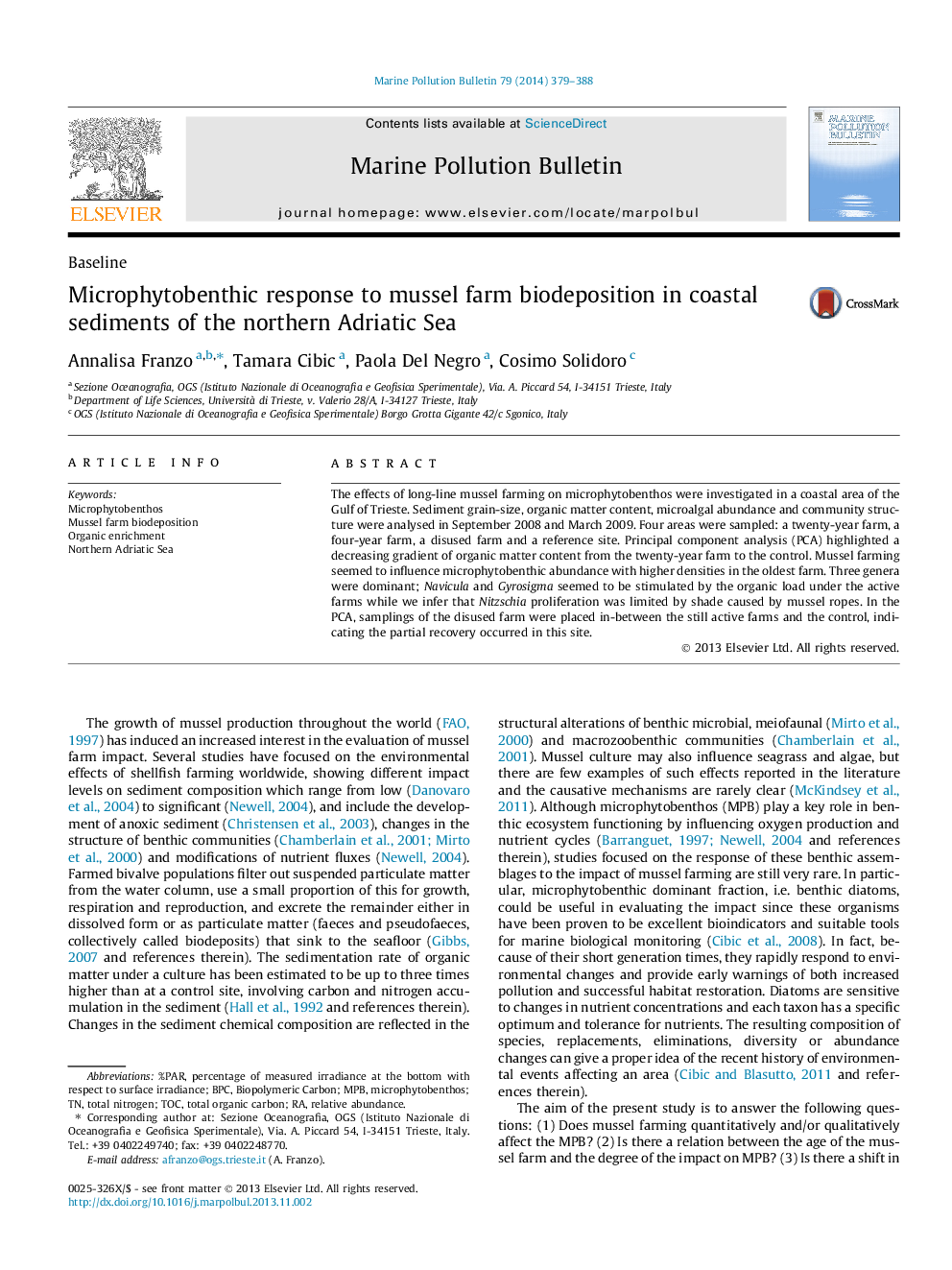| Article ID | Journal | Published Year | Pages | File Type |
|---|---|---|---|---|
| 6358942 | Marine Pollution Bulletin | 2014 | 10 Pages |
Abstract
The effects of long-line mussel farming on microphytobenthos were investigated in a coastal area of the Gulf of Trieste. Sediment grain-size, organic matter content, microalgal abundance and community structure were analysed in September 2008 and March 2009. Four areas were sampled: a twenty-year farm, a four-year farm, a disused farm and a reference site. Principal component analysis (PCA) highlighted a decreasing gradient of organic matter content from the twenty-year farm to the control. Mussel farming seemed to influence microphytobenthic abundance with higher densities in the oldest farm. Three genera were dominant; Navicula and Gyrosigma seemed to be stimulated by the organic load under the active farms while we infer that Nitzschia proliferation was limited by shade caused by mussel ropes. In the PCA, samplings of the disused farm were placed in-between the still active farms and the control, indicating the partial recovery occurred in this site.
Keywords
Related Topics
Physical Sciences and Engineering
Earth and Planetary Sciences
Oceanography
Authors
Annalisa Franzo, Tamara Cibic, Paola Del Negro, Cosimo Solidoro,
